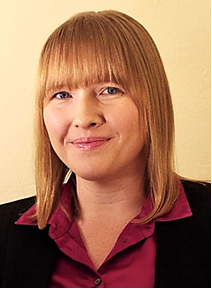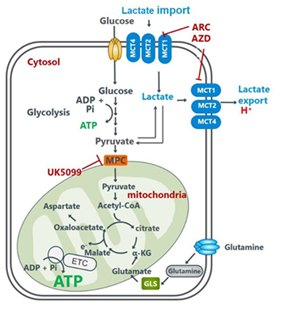Please join us for the January MIT.nano Seminar Series:
 Genevieve Van de Bittner, PhD
Genevieve Van de Bittner, PhD
R&D Researcher, Agilent Research Laboratories
Agilent Technologies, Inc.
Date: Monday, January 25, 2021
Time: 3pm - 4pm EST
Location: Zoom webinar
>>Register
After registering, you will receive the link to join. This event is free and open to the public.
To receive event announcements, sign up for our email list.
Abstract
 Alterations in metabolic flux have been linked to a wide variety of cell processes, from cancer development to T cell activation during immunotherapy or infection. This talk will cover two complementary technologies for measuring metabolic flux— Seahorse XF analyzers and liquid chromatography-mass spectrometry (LC/MS) qualitative flux analysis.
Alterations in metabolic flux have been linked to a wide variety of cell processes, from cancer development to T cell activation during immunotherapy or infection. This talk will cover two complementary technologies for measuring metabolic flux— Seahorse XF analyzers and liquid chromatography-mass spectrometry (LC/MS) qualitative flux analysis.
Both technologies provide important insights into the rates of metabolic reactions within cells, with Seahorse XF measurements providing cellular resolution and LC/MS qualitative flux measurements providing molecular resolution. Combined, these technologies offer an in-depth, multi-scale method for examining metabolic flux.
This presentation will highlight vignettes of combined Seahorse XF and LC/MS qualitative flux analyses that provide a comprehensive view of adipocyte metabolism during cool-temperature adaptation, metabolic alterations during infectious disease, mutation-specific metabolic flux in cancer cells, and the metabolic response of cancer cells to oxidative phosphorylation modulating compounds.
Biography
Genevieve Van de Bittner joined Agilent Research Laboratories in 2016 with a goal of improving measurement technologies. Toward this goal, Genevieve has developed automated sample preparation methods for LC/MS metabolomic and lipidomic analyses and explored the combination of Seahorse and Mass Spectrometry metabolomic data.
These efforts have been informed by Genevieve’s training in chemical biology, cell analysis, and clinical trials. Her training began at UC Berkeley with the development of novel bioluminescent and fluorescent chemical sensors to measure, in living systems, reactive oxygen species and metal ions and continued at Harvard Medical School with the development and translation to human trials of a new radiotracer for imaging a specific neuronal population.
